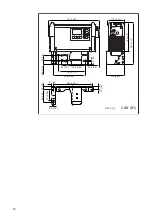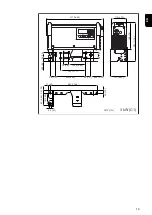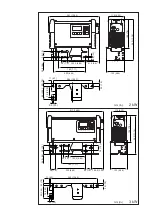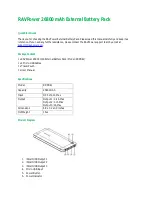
General informa-
tion regarding
the handling of
batteries
-
Protect batteries from dirt and mechanical damage.
-
Store charged batteries in a cool place. Self discharge is kept to a minimum
at approx. +2 °C (35.6 °F).
-
Carry out a visual inspection at least once a week or as often as specified by
the battery manufacturer to ensure that the acid (electrolyte) level in the
battery is at the max. mark.
-
If any of the following occur, do not start the device (or stop immediately if
already in use) and have the battery checked by an authorised workshop:
-
uneven acid levels and/or high water consumption in individual cells
caused by a possible fault.
-
overheating of the battery above 55 °C (131 °F).
Protecting your-
self and others
While the charger is in operation, keep all persons, especially children, out of the
working area. If, however, there are people in the vicinity,
-
warn them about all the dangers (hazardous acids and gases, danger from
mains and charging current, etc.),
-
provide suitable protective equipment.
Before leaving the work area, ensure that people or property cannot come to any
harm in your absence.
Safety measures
in normal opera-
tion
Chargers with a ground conductor must only be operated on a mains supply with
a ground conductor and a socket with a ground conductor contact. If the charger
is operated on a mains supply without a ground conductor or in a socket without
a ground conductor contact, this will be deemed gross negligence. The manufac-
turer shall not be held liable for any damage arising from such usage.
Only operate the charger in accordance with the degree of protection shown on
the rating plate.
Under no circumstances operate the charger if there is any evidence of damage.
Arrange for the mains cable to be checked regularly by a qualified electrician to
ensure the ground conductor is functioning properly.
Any safety devices and parts that are not functioning properly or are in imperfect
condition must be repaired by a qualified technician before switching on the
charger.
Never bypass or disable protection devices.
After installation, an accessible mains plug is required.
EMC Device
Classifications
Devices in emission class A:
-
Are only designed for use in industrial settings
-
Can cause line-bound and radiated interference in other areas
Devices in emission class B:
-
Satisfy the emissions criteria for residential and industrial areas. This is also
true for residential areas in which the energy is supplied from the public low-
voltage mains.
EMC device classification as per the rating plate or technical data.
7
EN
Summary of Contents for Selectiva 2060
Page 2: ......
Page 4: ...Option box 56 Mounting plate 57 Technical data 58 Selectiva 2 kW 58 Selectiva 3 kW 59 4 ...
Page 61: ...61 EN ...
Page 62: ...62 ...
Page 63: ...63 EN ...
Page 64: ......








































